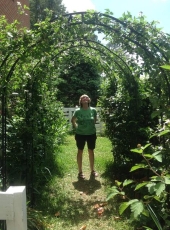
 1
1





Idle dreamer








Idle dreamer
 2
2




Buy Our Book! Food Web: Concept - Raising Food the Right Way. Learn make more food with less inputs
Off Grid Homesteading - latest updates and projects from our off grid homestead
 1
1





Idle dreamer




Tyler Ludens wrote:Thanks, Abe, I will definitely be looking to include those in the forest. Anything that can grow on its own in your area should do well here.

Buy Our Book! Food Web: Concept - Raising Food the Right Way. Learn make more food with less inputs
Off Grid Homesteading - latest updates and projects from our off grid homestead





Idle dreamer








Idle dreamer




Mediterranean climate, hugel trenches, fabulous clay soil high in nutrients, self-watering containers with hugel layers, keyhole composting with low hugel raised beds, thick Back to Eden Wood chips mulch (distinguished from Bark chips), using as many native plants as possible....all drought tolerant.




Idle dreamer




Mediterranean climate, hugel trenches, fabulous clay soil high in nutrients, self-watering containers with hugel layers, keyhole composting with low hugel raised beds, thick Back to Eden Wood chips mulch (distinguished from Bark chips), using as many native plants as possible....all drought tolerant.





Idle dreamer








Idle dreamer
 1
1








Idle dreamer








Idle dreamer




Steve Farmer wrote:Here are my 5 main desert support species:
Gliricidia Sepium
Moringa Oliefera
Leucaena Leucocephala
Mesquite
Acacia
The above are nitrogen fixers.
I am also putting in delonix regia and hybrid poplars as wind breaks
prickly pear and aloe vera are going in to provide fencing & more ground cover without needing irrigation
I'm just starting to try blackberries out as a ground cover/mulch. Not sure if they will get eaten, the lizards and rabbits here are pretty tough and desperate for anything green
Not a support species, but am putting in figs. As well as providing fruit, they hold the world record for having the deepest roots, so I'm expecting them to be beneficial, so maybe should be classed under "support"?

|
What a show! What atmosphere! What fun! What a tiny ad!
The new gardening playing cards kickstarter is now live!
https://www.kickstarter.com/projects/paulwheaton/garden-cards
|








